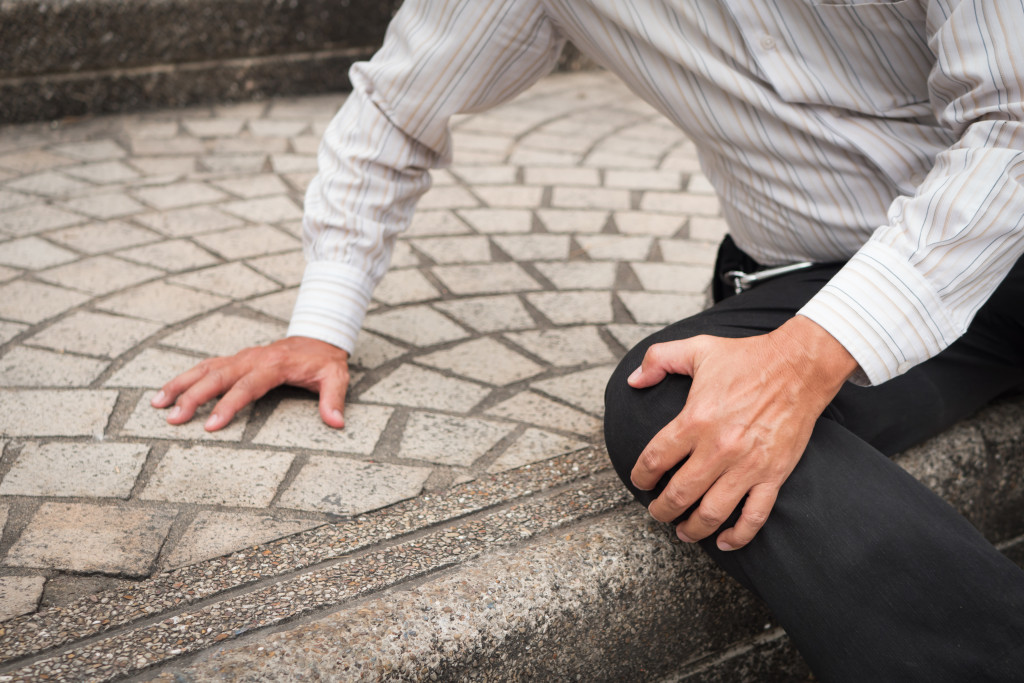Nobody is exempted from the natural process that is aging. But that, along with early lifestyle choices, comes with a decline in bodily functions, health, and more. Although there are preventative measures a person can take, there are some natural factors that you just can’t fight like the loss of bone density as one ages.
It’s a common fact that as a person grows older, they become more vulnerable to fractures and injuries due to falling. In some cases, it can prove to be fatal. That is why when an elderly suffers from a fall, it’s recommended that they be brought to the nearest hospital or urgent care facility.
What Is a Fall Hazard?
A fall hazard is defined as anything that may cause one to fall, possibly leading to harm. Fall-related injuries can be fatal or non-fatal, but most of the time it’s the latter. But even then, falls are a major public health problem globally.
Why Are the Elderly Prone to Falls?
As a person approaches their late years, they become more vulnerable to injury and mortality due to falls. Falls are the main cause of injury-related visits to emergency rooms and the top cause of accidental deaths in people over the age of 65. Increasing age, medication, cognitive decline or impairment, and sensory deficits are risk factors for falls in the elderly.
Increasing Age
With increasing age comes a decline in physical abilities, especially when the individual fails to maintain an active lifestyle. Failure to exercise regularly can result in reduced flexibility, muscle strength, and impaired balance and coordination. Although aging is inevitable and with it comes the body’s increasing feebleness, exercise should still be encouraged since exercise also helps prevent falls in the elderly.
With increasing age also comes health conditions to surface. Conditions such as arthritis and Parkinson’s disease can cause poor grip, physical strength, balance, and coordination. Additionally, cognitive impairments caused by diseases like Alzheimer’s and other forms of dementia also leave the elderly vulnerable to falls. They are more than three times more likely to get surgery or obtain immobility due to a hip fracture.
Medication
The use of sedative-hypnotic drugs or the use of four or more prescribed medications can make a senior vulnerable to falls. Side effects such as drowsiness and low blood pressure can lead to fall accidents. Best review these medications and their side effects with a professional.

Sensory Deficits
The sensory ability most crucial in terms of falls in the elderly is vision. As people age, their vision starts to become impaired. It becomes more difficult to detect fall hazards, such as steps, rugs, clutter, cable, extension cords, among others. These may sound like everyday items at home, but it’s important to note that anything that is virtually capable of causing the elderly to trip is a potential fall hazard. Because of their declining vision, it’s best to install preventive measures so that they can still perform their normal activities without the risk of falling.
How Is This Life-Threatening to the Elderly?
The elderly and their bodies as not as resilient as they once were, as they are more likely to break bones due to loss of bone mass. Bones also lose mineral content and become prone to osteoporosis, which makes bones less dense, more fragile, and likely to fracture in a fall accident. As a result, falls among the elderly might cause head trauma, internal bleeding, and bone fracture complication. Fractures can result in hospitalization, bed immobilization, respiratory infections, and other complications.
Preventive Measures To Do at Home
One of the main and effective ways of preventing any falls is by taking the underlying cause of the fall as soon as possible. As bodies age naturally, there is not much that can be done about that. The change is mostly in the environment of the elderly, making it accident-free and fall-free as much as possible. Here are some ways to achieve that.
Fall-Proof Home
The National Institute on Aging recommends that the following home upgrades should be installed: handrails on both sides of the stairs, bars near toilets, good lighting, night lights, a telephone near the bed, among other things. Avoid using small rugs as they might cause the elderly to slip. If there are any big carpets at home, be sure that they are flat and fixed firmly on the ground.
Regular Exercise
Exercise is good for developing balance, coordination, and strength, which are essential in preventing falls in the elderly. Exercising for at least two or more days a week should suffice. It’s important to start slow and gradually work towards your ideal routine. Remember to check with your doctor beforehand to get an opinion on which exercises are recommended, especially if there’s an underlying condition such as osteoporosis.
Adjust Diet
As mentioned above, osteoporosis makes the bone less dense and more susceptible to fractures. But with the right diet, can help prevent the development of osteoporosis. Key nutrients like calcium, protein, and vitamin D should be considered in the diet to help strengthen bones, especially in later life.

